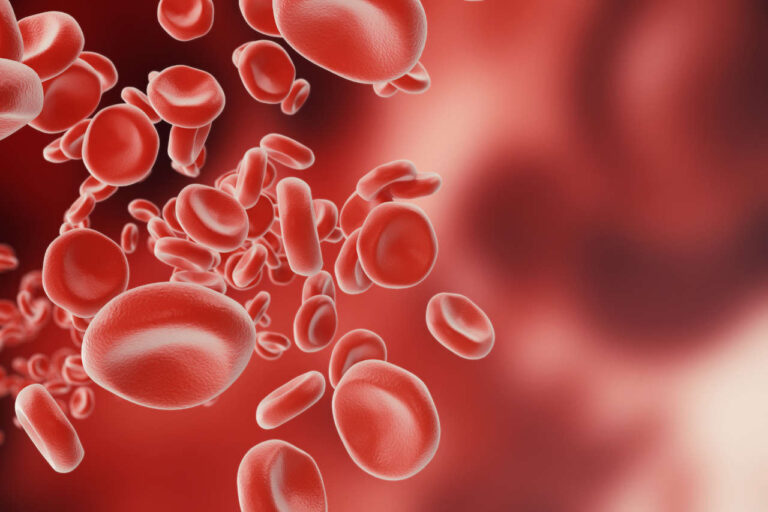
Multifocal Motor Neuropathy (MMN) is a rare, acquired form of motor neuropathy that manifests in progressive muscle weakness but does not affect a patient’s sense of touch.
MMN disease has a relatively recent nosological history, dating back to 1986. It is usually more noticeable in the upper limbs.
Testing, such as electrodiagnostics, can often show asymmetric motor neuropathy with distinct conduction blockades. Most patients have anti-ganglioside antibodies in their serum IgM (anti-GM1).
Intravenous immunoglobulin therapy often works well for these patients (IVIG).
Get IVIG Copay Assistance
IVIG Financial AssistanceA Decline in Muscle Strength
A progressive decline in strength will occur in most patients with MMN, particularly in the hands and arms. This can result in difficulty performing simple daily tasks such as writing, washing, or putting on one’s clothes.
However, studies have shown that patients with MMN may benefit from pharmaceutical treatments like intravenous immunoglobulin (IVIG).
What Is the Cause of MMN?
MMN is characterized as an immune-mediated motor neuropathy. When the body contains a high amount of GM1 in the motor neuron myelin, these elevated levels may be responsible for MMN’s characteristic motor involvement.
The conduction block observed in patients with MMN disease was previously thought to be caused by severe focal demyelination. Anti-GM1 antibodies appear to impair sodium and potassium channels near the node of Ranvier of myelinated motor axons, which are necessary for conduction block.
As a result, some use the term “nodo-paranodopathy” to describe the condition. Activation of the complement system is almost certainly involved in disease pathogenesis.
Treatments such as Serum IgM, anti-GM1 antibodies, and IVIG response in these patients have been shown to positively support the treatment outcomes of this condition.
What Is the Prevalence of MMN?
With a global prevalence of less than 1 in 100,000 people, multifocal motor neuropathy is a relatively uncommon condition. Reports show 0.65 per 100,000 people in Austria and 0.29 per 100,000 in Japan suffer from MMN.
Men are 2.7 times more likely than women to be affected by this condition. But there have been reports of children as young as six, the elderly, and adults in their 30s or 50s having this disease.
Consult an IVIG Specialist
The Best IVIG Home Infusion | Get IVIG Treatment AssistancePathophysiologic Mechanisms
MMN can also be commonly referred to as multifocal motor neuropathy with conduction block (MMNCB). MMNCB can be further broken down into patients with anti-GM1 and without anti-GM1 antibodies.
MMNCB is primarily due to anti-GM1 antibodies, which have been linked to its physiological process in the body. Generally, peripheral motor nerves have a higher concentration of GM1 than sensory nerves. Ranvier nodes near the motor nerves’ peripheral motor endings contain a higher concentration of GM1.
Although its exact function is unknown, many believe it to be responsible for stabilizing and clustering the ion channels near the Ranvier nodes, which are critical for propagation action potentials in the muscle. A decrease in potential action propagation occurs due to the disruption of these ion channels, which can be observed electrophysiologically as a conduction block and a reduction in conduction velocity.
What is common in MMNCB is anti-GM1 antibodies. However, that is not always the case. The pathophysiology of MMNCB without anti-GM1 antibodies is still unclear at this time. These patients may have anti-GM1 titers that are undetectable, or they may have multiple antibodies directed against different antigens in their system. Patients who have anti-GM1 antibodies and those who do not have anti-GM1 antibodies have clinical characteristics that are identical.
History and Progression
When MMN disease manifests in the body, affected individuals experience progressive asymmetric muscle weakness ranging from mild-moderate to chronic. The initial complaint from MMN may be unilateral wrist drop, hand weakness, or foot drop. But leg weakness is possible, even though the muscles of the upper limbs are primarily affected.
The cold has the potential to exacerbate the weakness. Even though sensory symptoms such as tingling and pain are not uncommon, they are usually mild.
Muscle cramps, twitching, fasciculation, and abnormal fatigue are all possible side effects in some patients. These patients will rarely experience cranial nerve, bulbar, or respiratory muscle involvement.
Doctors have discovered distal muscle weakness in the motor nerve distribution during a physical examination for MMN. This occurs when the radial nerve vs. the triceps are involved, leading to the extensor muscles of the wrist and fingers being more severely affected.
Myotome can be defined as a group of muscles that is supplied by a single spinal nerve root. These muscles may not experience the pain of sharing a nerve with others. However, the abductor pollicis brevis (APB) and abductor depressor minimi (ADM) share the same myotome (C8-T1), and the median nerve affects only the abductor pollicis brevis (APB). This can lead to muscle atrophy that may occur late in the disease’s progression and is often mild compared to the associated muscle weakness.
The deep tendon reflexes may be normal or asymmetrically reduced. Upper motor neuron signs are typically absent in MMN, allowing for a clear distinction between it and amyotrophic lateral sclerosis, which is more common in the latter (ALS). Myokymia can occur in muscles that have been affected.
Ask About IVIG Home Infusion
What Is Evaluation Like for MMN?
Electrophysiological Studies
The electrophysiological findings are consistent with multifocal motor neuropathy with normal sensory nerve conduction. Longer motor nerve latencies and slower conduction velocities are two signs of demyelination doctors can detect. F-wave responses can be absent or prolonged.
A motor conduction block and temporal dispersion in the motor output signal are hallmark symptoms of MMNCB. Due to its proximity, the conduction block is absent or unevaluable using routine nerve conduction studies. Proximal conduction blocks may reduce the recruitment of the action potential in muscles, which can be detected using electromyography.
In this case, the compound muscle action potential (CMAP) amplitude or area is reduced by more than 50% between the proximal and distal nerve stimulation sites. It often indicates a new condition. Non-compressible sites are rarely affected by the disease.
Doctors cannot use conduction blocks across known nerve entrapment sites (e.g., the median nerve at the wrist) to diagnose MMNCB. Conduction block occurs in addition to MMNCB in acquired demyelinating conditions like CIDP and Guillain-Barre syndrome (GBS).
Laboratory Testing
Routine blood and urine tests for patients are insignificant for this diagnosis. Most likely, a spinal tap will be done and the protein level in the cerebrospinal fluid (CSF) will be analyzed. It is usually normal or slightly elevated, depending on the condition. What distinguishes MMN from CIDP is this critical feature that doctors should not overlook. Doctors will often complete a spinal tap to rule out any other diagnosis that may present similarly to MMN.
According to the National Institutes of Health, about half of all cases have GM1 ganglioside antibodies. Treatment does not appear to have any effect on anti-GM1 titers. Anti-GM1 antibodies, even though they are not specific for MMN and are present in the AMAN variant of GBS, help confirm the diagnosis. To improve antibody detection sensitivity, look for GM1/galactocerebroside (GM1/GalC) complexes.
Imaging Studies
According to the American Society of Neuroradiology, nerve ultrasound and MRI can help diagnose patients when electrophysiological tests are inconclusive. Indeed, when conduction blocks are not detectable or when a progressive axonal loss occurs, diagnosing the disease can be challenging.
Approximately half of the patients with MMN disease and CIDP have T2 hyperintense signals in the brachial plexus, with or without contrast enhancement. While MMN signals are asymmetrical and often unidirectional, CIDP signals are bidirectional and symmetrical.
High-resolution ultrasound imaging may reveal an increase in the median and ulnar nerves’ cross-sectional area in MMN compared to controls (HRUS).
Diagnostic Criteria
These diagnostic criteria were revised in 2010 by the Task Force of the European Federation of Neurological Societies (EFNS) and the Peripheral Nerve Society (PNS) to assist in the diagnosis of multiple myeloma neuropathy (MMN).
Standard Mandatory Criteria
- Slowly progressive, focal asymmetric limb weakness that has been present for at least one month and is defined as motor involvement in the motor nerve distribution of at least two nerves (usually for more than six months). It is only possible to make a diagnosis based on the evidence if symptoms and signs are present in only one nerve’s distribution.
- There are no objective sensory abnormalities in the lower limbs, except for minor vibration sense abnormalities in the limbs.
Consult an IVIG Specialist
The Best IVIG Home Infusion | Get IVIG Treatment AssistanceSupportive Clinical Criteria for MMN
- Predominant involvement of the upper limbs.
- Tendon reflexes in the affected limb are diminished or absent.
- Absence of involvement of the cranial nerves.
- In the affected limb, cramps and fasciculations.
- Immunomodulatory treatment response.
Exclusion Criteria
- Signs of the upper motor neuron.
- Significant bulbar involvement.
- Sensory impairment is more pronounced in the lower limbs than minor vibration loss.
- During the initial weeks, there is widespread symmetric weakness.
What Is the Treatment for MMN?
For MMNCB disease, IVIG is the primary pharmacological treatment option available. Notably, IVIG treats over 75% of patients.
However, the improvement in muscle strength is only temporary, with only 20% of MMN patients experiencing long-term symptom remission.
The vast majority of patients require IVIG infusions regularly.
It is possible that, despite routine IVIG infusions, motor deficits will worsen over time due to secondary axonal damage in the brain. According to a Cochrane review, IVIG treatments have been shown to be superior in comparison to placebo treatments when treating MMN.
IVIG Infusion Rates for MMN
Initially, IVIG is given at 0.4 g/kg/day for five days, totaling 2 g/kg over the course of 5 days.
Some clinicians may administer IVIG at a rate of 1 g/kg per day for two days.
Depending on the patient’s condition, maintenance IVIG infusion rates range from 0.04 g/kg weekly to 2 g/kg every eight weeks.
Since doctors typically administer Ig for an extended period, often years, some studies investigated the subcutaneous route. The results show that SCIG is safe, effective, and easy to administer at home. The administration of SCIG is similar to IVIG.
Treatment Info
Get IVIG Prior AuthorizationOther MMN Treatment Options
Patients who do not respond to IVIG have a few treatment options available to them. Various immunomodulatory agents have been used to treat cancer with varying degrees of success.
Oral cyclophosphamide maintains disease remission and decreases IVIG frequency effectively, but it has significant side effects.
In 2007, an RCT involving 28 patients found no significant difference between mycophenolate mofetil plus IVIG and IVIG alone in patients with MMN disease. Scientists must establish the efficacy of immunomodulatory drugs in multiple myeloma necrosis through comparative randomized controlled trials (RCT).
In patients with MMN, corticosteroids and plasmapheresis have been deemed ineffective treatments.
What Is the Differential Diagnosis for MMN?
ALS, CIDP, and hereditary neuropathy with susceptibility to pressure palsies (HNPP) are important differential diagnoses for multifocal motor neuropathy. Notably absent from the list are radiculopathy, entrapment neuropathies, mononeuritis multiplex, hereditary motor neuropathies, porphyria, and lead intoxication.
Hereditary Neuropathy With Liability to Pressure Palsies
Electrodiagnostic studies reveal an asymmetric motor weakness in the distribution of multiple motor nerves and a conduction block in HNPP. Consistently found at known nerve entrapment sites, these conduction blocks are beneficial (e.g., the median nerve at the wrist and the ulnar nerve at the elbow).
Sensory symptoms are also common in HNPP patients. Because the condition is autosomal dominant, it is common for affected people to have a strong family history. HNPP is genetically detectable due to a deletion of the PMP-22 gene. The treatment is supportive, and most patients recover on their own.
Chronic Inflammatory Demyelinating Polyneuropathy (CIDP)
Those with CIDP will display diminished or absent deep tendon reflexes and conduction blocks on electrodiagnostic studies. The leg muscles are typically more affected than the arms in CIDP, despite muscle weakness being frequently symmetrical.
CIDP vs. MMN
Compared to MMN disease, CIDP has more sensory involvement, and motor involvement is rare. In patients with CIDP, cerebral spinal fluid will be analyzed to reveal if there are elevated protein levels and significant cytoalbuminologic dissociation. Antibodies against GM1 are frequently absent from the bloodstream. Corticosteroids and plasmapheresis are beneficial in the treatment of patients with CIDP.
MADSAM is a rare CIDP variant that affects single nerves. What is notable is that MADSAM is similar to MMN, as both conditions affect the myelin leading to an asymmetric multifocal pattern of motor and sensory loss, as well as conduction block. This condition occurs due to a genetic mutation. MADSAM is distinguished from MMN by the distinct sensory signs and symptoms and electrodiagnostic studies demonstrating sensory nerve involvement.
Amyotrophic Lateral Sclerosis
The progressive pure motor weakness associated with ALS and MMN is the same. However, MMNCB progresses more slowly than ALS on average. The two diseases also differ in the absence of upper motor neuron findings and the preservation of respiratory and cranial muscles.
Muscle weakness in multiple myeloma occurs in the motor nerve distribution and does not follow myotomes in most patients. Muscle atrophy is less noticeable in the early stages of the disease. According to electrodiagnostic studies, there is a pattern of demyelination with conduction blockades in the brain.
ALS typically affects the entire myotome at once. This condition causes muscle atrophy and fasciculation. The presence of a split hand sign, which is characteristic of ALS, may be observed. It is possible to experience a pseudobulbar effect.
The results of nerve conduction studies are consistent with the norm. An EMG of the needle may reveal evidence of denervation. It is critical to distinguish between MMN and ALS because the former responds well to treatment while the latter does not.
Get IVIG Copay Assistance
IVIG Financial AssistanceWhat Is MMN’s Survival Rate or Prognosis?
The course of treatment for multifocal motor neuropathy is generally favorable. IVIG therapy is effective in approximately 80 percent of patients.
The majority of patients will require IVIG or SCIG periodically due to the progressive muscle weakness that progresses slowly in non-responders. This can lead to a debilitating quality of life, in which some patients are not able to go about their daily lives without assistance.
In one study, over 94 percent of those who participated were able to remain functioning at their jobs. The Rasch-developed Overall Disability Scale for multiple myeloma received validation in 2015. It is a 25-item questionnaire designed to track disease progression and treatment response.
MMN Complications
Since MMN disease spares the cranial and respiratory muscles, it is rarely fatal. The vast majority of complications are related to the treatment process itself.
- These include thromboembolic events (myocardial infarction, stroke, or deep vein thrombosis), renal failure, allergic reactions, aseptic meningitis, and transfusion-associated acute lung injury.
- Cyclophosphamide can cause interstitial pneumonitis, hemorrhagic cystitis, and bone marrow suppression, among other side effects.
Patient Education
No known effective strategies exist currently for preventing this syndrome from manifesting itself. The need for patient education about MMN’s diagnosis and natural history is essential for this diagnosis. In most cases, IVIG and SCIG treatments will be necessary for an extended period to help alleviate and target the main symptoms.
As discussed above, MMN primarily affects the hand muscles, which might restrict writing and other skilled hand movements.
What is unfortunate for an MMN patient is that these treatments can be expensive and have unintended side effects. In addition, despite routine treatments, this disease may progress, but it is rarely fatal in its early stages.
Improving Healthcare Team Results
The outpatient setting should provide MMN patients with regular visits to a primary neurologist and physical and occupational therapists to address their neurological symptoms. As a result of the predominant involvement of distal muscles in the upper limbs in multifocal motor neuropathy, patients may experience impairment in fine motor skills, such as writing and drawing.
Therefore, doctors recommend that patients receive regular physiotherapy and occupational therapy treatments to alleviate their symptoms.
Can IVIG help?
Free IVIG Treatment InfoFAQs
What is multifocal motor neuropathy (MMN)?
Multifocal Motor Neuropathy (MMN) is a rare form of acquired motor neuropathy that manifests as progressive muscle weakness but does not affect a patient’s sense of touch.
It is usually more noticeable in the upper limbs. Electrodiagnostics often show asymmetric motor neuropathy with distinct conduction blockades.
Is MMN an autoimmune disease?
Nobody knows for sure what causes the disease. Scientists have determined that it is an autoimmune disease, which means that your immune system mistakenly perceives your nerve cells as intruders and launches an attack against them. It is the goal of researchers to learn more about the disease and determine why it manifests itself.
What are the symptoms of multifocal motor neuropathy?
If you have MMN, the first symptoms will most likely manifest in your hands and lower arms. Your muscles may feel sluggish and cramp or twitch in ways you are unable to control.
It may begin in a particular area of the arm or hand, such as the wrist or finger. Typically, one side of your body will exhibit more severe symptoms than the other. Your legs may eventually be affected by the disease.
What Is the Effect of MMN on breathing?
MMN does not cause premature death or significant difficulties breathing or swallowing, except for rare instances. It can, however, cause considerable dysfunction and disability, and the disorder appears to last indefinitely, with only a tiny percentage of cases returning to remission for an extended period.
REFERENCES:
- Roth G, Rohr J, Magistris MR, Ochsner F. Motor neuropathy with proximal multifocal persistent conduction block, fasciculations and myokymia. Evolution to tetraplegia. Eur Neurol. 1986;25(6):416-23. doi: 10.1159/000116045. PMID: 3024989.
- Vanhoutte EK, Faber CG, van Nes SI, Cats EA, Van der Pol WL, Gorson KC, van Doorn PA, Cornblath DR, van den Berg LH, Merkies IS; PeriNomS Study Group. Rasch-built Overall Disability Scale for Multifocal motor neuropathy (MMN-RODS(©) ). J Peripher Nerv Syst. 2015 Sep;20(3):296-305. doi: 10.1111/jns.12141. Erratum in: J Peripher Nerv Syst. 2016 Mar;21(1):55. PMID: 26329270.
- Taylor BV, Wright RA, Harper CM, Dyck PJ. Natural history of 46 patients with multifocal motor neuropathy with conduction block. Muscle Nerve. 2000 Jun;23(6):900-8. doi: 10.1002/(sici)1097-4598(200006)23:6<900::aid-mus9>3.0.co;2-y. PMID: 10842266.
- Biessels GJ, Franssen H, van den Berg LH, Gibson A, Kappelle LJ, Venables GS, Wokke JH. Multifocal motor neuropathy. J Neurol. 1997 Mar;244(3):143-52. doi: 10.1007/s004150050065. PMID: 9050954.
- Piepers S, Van den Berg-Vos R, Van der Pol WL, Franssen H, Wokke J, Van den Berg L. Mycophenolate mofetil as adjunctive therapy for MMN patients: a randomized, controlled trial. Brain. 2007 Aug;130(Pt 8):2004-10. doi: 10.1093/brain/awm144. Epub 2007 Jul 10. PMID: 17626040.
- Meucci N, Cappellari A, Barbieri S, Scarlato G, Nobile-Orazio E. Long term effect of intravenous immunoglobulins and oral cyclophosphamide in multifocal motor neuropathy. J Neurol Neurosurg Psychiatry. 1997 Dec;63(6):765-9. doi: 10.1136/jnnp.63.6.765. PMID: 9416813; PMCID: PMC2169869.
- Harbo T, Andersen H, Hess A, Hansen K, Sindrup SH, Jakobsen J. Subcutaneous versus intravenous immunoglobulin in multifocal motor neuropathy: a randomized, single-blinded cross-over trial. Eur J Neurol. 2009 May;16(5):631-8. doi: 10.1111/j.1468-1331.2009.02568.x. Epub 2009 Feb 19. PMID: 19236457.
- Eftimov F, Vermeulen M, de Haan RJ, van den Berg LH, van Schaik IN. Subcutaneous immunoglobulin therapy for multifocal motor neuropathy. J Peripher Nerv Syst. 2009 Jun;14(2):93-100. doi: 10.1111/j.1529-8027.2009.00218.x. PMID: 19691531.
- Joint Task Force of the EFNS and the PNS. European Federation of Neurological Societies/Peripheral Nerve Society guideline on management of multifocal motor neuropathy. Report of a joint task force of the European Federation of Neurological Societies and the Peripheral Nerve Society–first revision. J Peripher Nerv Syst. 2010 Dec;15(4):295-301. doi: 10.1111/j.1529-8027.2010.00290.x. PMID: 21199100.
- Jongbloed BA, Haakma W, Goedee HS, Bos JW, Bos C, Hendrikse J, Van Den Berg LH, Van Der Pol WL. Comparative study of peripheral nerve Mri and ultrasound in multifocal motor neuropathy and amyotrophic lateral sclerosis. Muscle Nerve. 2016 Dec;54(6):1133-1135. doi: 10.1002/mus.25391. Epub 2016 Oct 1. PMID: 27571543.
- Beadon K, Guimarães-Costa R, Léger JM. Multifocal motor neuropathy. Curr Opin Neurol. 2018 Oct;31(5):559-564. doi: 10.1097/WCO.0000000000000605. PMID: 30102608.
- Léger JM, Guimarães-Costa R, Iancu Ferfoglia R. The pathogenesis of multifocal motor neuropathy and an update on current management options. Ther Adv Neurol Disord. 2015 May;8(3):109-22. doi: 10.1177/1756285615575269. PMID: 25941538; PMCID: PMC4409549.
- Kamata A, Muramatsu K, Sawaura N, Makioka N, Ogata T, Kuwashima M, Arakawa H. Demyelinating neuropathy in a 6-year-old girl with autism spectrum disorder. Pediatr Int. 2017 Aug;59(8):951-954. doi: 10.1111/ped.13331. PMID: 28804976.
- Miyashiro A, Matsui N, Shimatani Y, Nodera H, Izumi Y, Kuwabara S, Imai T, Baba M, Komori T, Sonoo M, Mezaki T, Kawamata J, Hitomi T, Kawamata J, Hitomi T, Kohara N, Arimura K, Hashimoto S, Arisawa K, Kusunoki S, Kaji R; Japanese Multifocal Motor Neuropathy Study Group. Are multifocal motor neuropathy patients underdiagnosed? An epidemiological survey in Japan. Muscle Nerve. 2014 Mar;49(3):357-61. doi: 10.1002/mus.23930. PMID: 24741683.
- Löscher WN, Oberreiter EM, Erdler M, Quasthoff S, Culea V, Berek K, Embacher N, Grinzinger S, Hess I, Höger FS, Horlings CGC, Huemer M, Jecel J, Kleindienst W, Laich E, Müller P, Oel D, Örtl W, Lenzenweger E, Rath J, Stadler K, Stieglbauer K, Thaler-Wolf C, Wanschitz J, Zimprich F, Cetin H, Topakian R. Multifocal motor neuropathy in Austria: a nationwide survey of clinical features and response to treatment. J Neurol. 2018 Dec;265(12):2834-2840. doi: 10.1007/s00415-018-9071-9. Epub 2018 Sep 26. PMID: 30259176; PMCID: PMC6244652.
- Kieseier BC, Mathey EK, Sommer C, Hartung HP. Immune-mediated neuropathies. Nat Rev Dis Primers. 2018 Oct 11;4(1):31. doi: 10.1038/s41572-018-0027-2. PMID: 30310069.
- Yeh WZ, Dyck PJ, van den Berg LH, Kiernan MC, Taylor BV. Multifocal motor neuropathy: controversies and priorities. J Neurol Neurosurg Psychiatry. 2020 Feb;91(2):140-148. doi: 10.1136/jnnp-2019-321532. Epub 2019 Sep 11. PMID: 31511307.
- Jinka M, Chaudhry V. Treatment of multifocal motor neuropathy. Curr Treat Options Neurol. 2014 Feb;16(2):269. doi: 10.1007/s11940-013-0269-y. PMID: 24395647.
- Lawson VH, Arnold WD. Multifocal motor neuropathy: a review of pathogenesis, diagnosis, and treatment. Neuropsychiatr Dis Treat. 2014 Apr 5;10:567-76. doi: 10.2147/NDT.S39592. PMID: 24741315; PMCID: PMC3983019.
- Chad DA, Hammer K, Sargent J. Slow resolution of multifocal weakness and fasciculation: a reversible motor neuron syndrome. Neurology. 1986 Sep;36(9):1260-3. doi: 10.1212/wnl.36.9.1260. PMID: 3748396.













